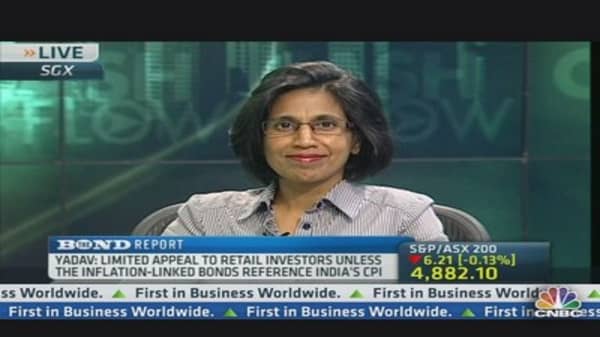India, the world's largest consumer of gold, has stepped up its battle against gold bugs by raising an import duty on the yellow metal to 8 percent from 6 percent late Wednesday – its fourth such move in 18 months.
But market watchers are doubtful the measure will do much to curb demand, especially with gold prices at such attractive levels.
"If 6 percent did not stem the tide of purchases then I really do not see what 8 percent will do. Buying gold is a cultural experience. Indians will always do it. If they see value they will buy it, which they have and will continue to," Jonathan Barratt, chief executive at Barratt's Bulletin, a commodity research firm.
Tom Price, global commodities analyst at UBS, added that once the new tax is imposed, consumers will likely adjust around it relatively quickly.
(Read More: How Gold's Fall Will Affect World's Biggest Consumer)
Over the past year and a half, the South Asian nation has been actively targeting gold imports – its biggest import after crude oil – in order to reduce its current account deficit which stood at 6.7 percent of gross domestic product in the December quarter. The government first increased the import duty on gold back in January 2012, hiking it to 2 percent from a flat rate of 300 rupees per 10 grams. The latest move means taxes have quadrupled since.
Earlier this week, the government sought to deter demand for bullion by issuing inflation-indexed bonds as an alternative to gold for domestic investors.
Gold is widely regarded as a store of wealth among Indians and is seen as an inflation hedge, so moderating demand has proved a difficult task, particularly with gold prices falling to a two-year low in April. Gold imports in fact surged 138 percent year on year to $7.5 billion in April as consumer took advantage of lower prices.
In order to be impactful, commodity analysts believe the import duty would need to be raised into the double digits.
"Really, the only way is a substantial lift in trade taxes. Move into double digit numbers. If you're in single digit tax numbers, 10 percent or above would shock the market and you would see an impact," said Price of UBS.





